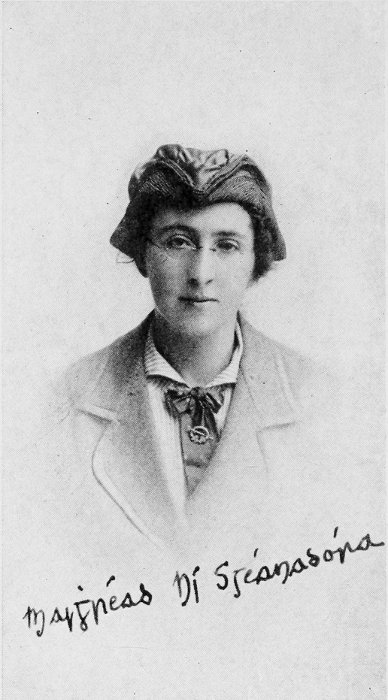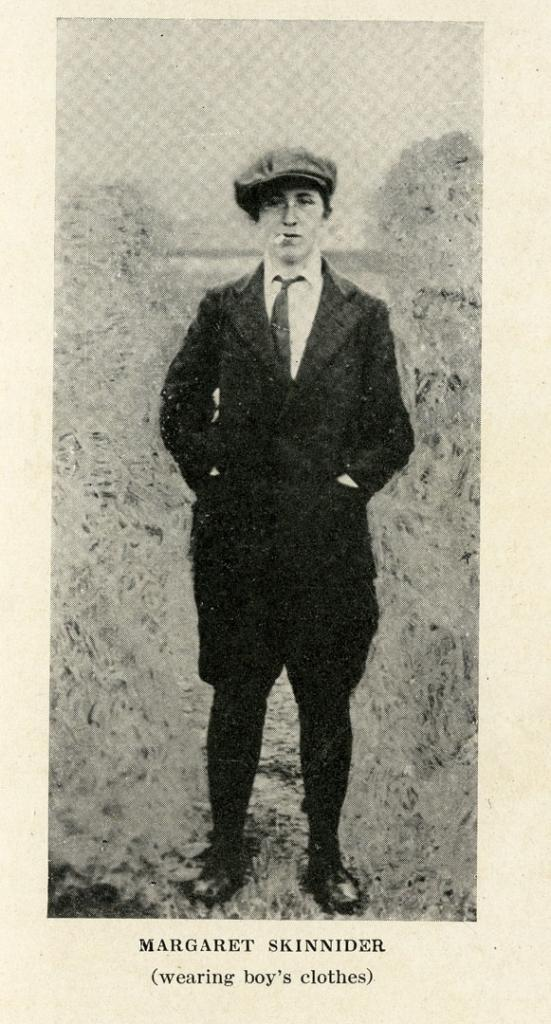Margaret Skinnider traversed Dublin with despatches for the Republic of Ireland during the Easter Rising. She was an intelligent teacher who had an infinity for mathematics and calculus. She rode her bike fast and hard to put distance between her and the British with their machine guns. She could shoot and be extremely capable of using a rifle with accuracy. After the Easter Rising, Skinnider wrote down her memoirs so others could hear her story. She also made appearances in memoirs of fellow rebel fighters and she was one of many women who fought in the Easter Rising. Margaret Skinnider was a brave woman who fought for the Republic in the Easter Rising, she crossed gender boundaries, and did her part to help her comrades and her country.

Margaret Skinnider was born in Ireland. She rode her bike to help where she could with the Easter Uprising. She worked as a scout, a dispatch-rider, a raider, and a sniper. She had an exciting role and was able to participate in the rebellion. Margaret Skinnider has not been covered enough in historical writings. Even though she is an intriguing and bold suffragette character, her role in the uprising was not examined as it deserved. She wrote a memoir which describes her early life as well as her participation as a rebel, and her injury in combat.
In Skinnider’s memoirs, she stated, “Scotland is my home, but Ireland my country.” Both of her parents were Irish, but they lived their whole lives in Scotland. She resented the English because it was usually the rich English planter people versus the poor Irish people. She was appalled at how Irish History was rewritten by the English and Anglicized.[1] Skinnider became part of a few organizations; the Irish Volunteers, the Cumman-na-nBan, and the British Rifle Practice Club. The rifle club is where Skinnider learned to shoot. This was ironic because the club was first started by the British for British home protection, teaching the women to shoot so they could defend the Empire.[2]

The Countess Markievicz heard of Skinnider and wanted to meet her. Skinnider’s work in the Cumman-na-nBan preceded her. [3] The Countess was the first to put Skinnider into boy’s clothes. After, Skinnider went walking with the Fianna Boys while they asserted their authority and discovered she fit right into the Glasgow Fianna.[4] Eventually, the Countess inquired if Skinnider could make a dynamite plan to bomb Beggar’s Bush barracks. She already knew that Skinnider knew how to figure out distances and how to map. Skinnider loved her calculus and mathematics.[5] She studied the map of Dublin so she could navigate the city. She visited the barracks and tracked data regarding its placement and construction.[6] Skinnider started scouting the city for troops on her bike.[7] She was the despatch rider for St. Stephen’s Green Command. She was also a scout for Commandant Michael Mallin. [8]
During the Uprising, Skinnider is shot three times.[9] Soon a general surrender came. Within an hour of the surrender, Skinnider was sent to the hospital by ambulance. Most Irish fighters surrendered in St. Patricks Square and turned in their weapons.[10] Skinnider was extremely ill in the hospital trying to recover from her wounds. She kept hearing the news of executions and prison sentences.[11] Skinnider was left untouched by the British because she was so sick. A detective came some weeks later and took Skinnider to prison. She was only there for a short period before her doctor raged that she was not well enough to go to jail and needs more time to recover. She was free to go.[12]
[1] Skinnider, 2016. 9.
[2] Skinnider, 2016. 9.
[3] Skinnider, 2016. 10.
[4] Skinnider, 2016. 13.
[5] Skinnider, 2016. 18.
[6] Skinnider, 2016. 18.
[7] Skinnider, 2016. 34.
[8] Skinnider, 2016. 35.
[9] Skinnider, 2016. 52.
[10] Skinnider, 2016. 56.
[11] Skinnider, 2016. 57.
[12] Skinnider, 2016. 65.
Bibliography
Primary Sources
Skinnider, Margaret. 2016. Doing My Bit For Ireland (Illustrated Edition). S.l.: Echo Library.
Secondary Sources
McGarry, Fearghal. 2017. The Rising: Ireland: Easter 1916. Oxford: Oxford University Press.
Wills, Clair. Dublin 1916 – the Siege of the Gpo. London: Profile Books, 2010.
